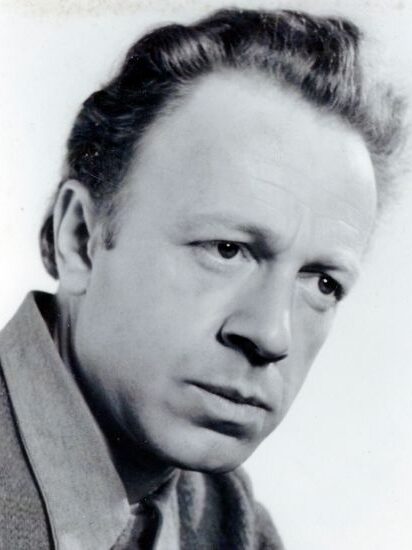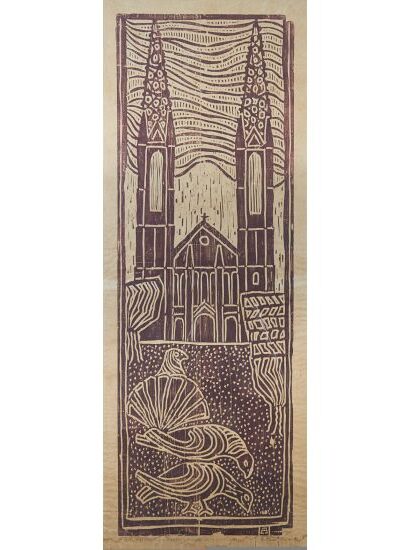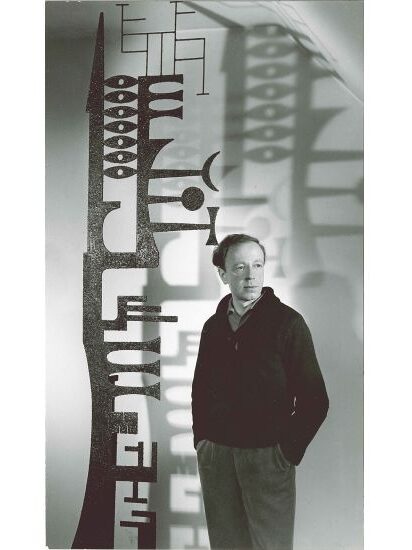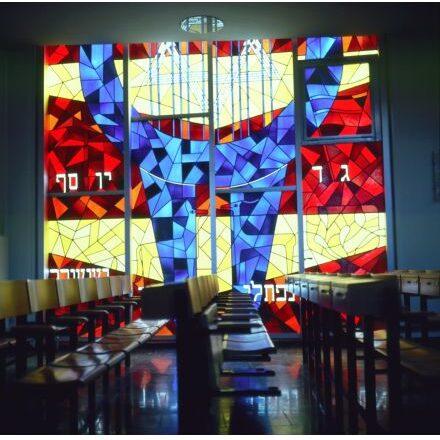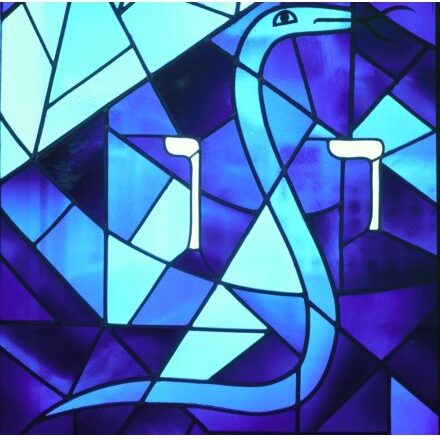Altdorf, Egon
Sculptor, glass artist, graphic artist, poet
Altdorf, Egon Arnold Hubert
Born: April 4, 1922 in Treptow an der Rega (Trzebiatów, Poland)
died: May 13, 2008 in Wiesbaden
Egon Altdorf only spent the first few years of his childhood in East Pomerania, as the family moved to Berlin in 1924. After graduating from high school in 1941, he took part in the Second World War as a soldier in Sicily and Africa and was held as an American prisoner of war for three years. After his release in 1946, he settled in Wiesbaden. In 1954, he married the Englishwoman Diana Cautley Wilson, with whom he had a son. The marriage ended in divorce in 1959 and Diana Altdorf returned to England with their son Dorian. Altdorf lived in Wiesbaden until his death, from 1968 in the house at Freseniusstrasse 17.
Initially working in Wiesbaden as a journalist for the Wiesbadener Kurier, he studied from 1947 to 1949 at the Werkkunstschule Wiesbaden under Friedrich Roland Watzka (born 1906) and then until 1952 at the Staatliche Bau- und Kunstschule Mainz under the sculptor Emy Roeder (1890 - 1971), who held a teaching position there from 1950 to 1953. Her influence was decisive for Altdorf's development. Based on "her highly stylized, yet representational sculptures, Altdorf developed a clear abstract formal language". (Lewalter)
At the beginning of his career, he initially created large color woodcuts. In 1950, his woodcut "Bonifatiuskirche mit Tauben" (St. Boniface's Church with Doves) won first prize in the graphics category of a competition organized by the city of Wiesbaden on the theme of "City Views". But as early as 1952, he took part in the worldwide sculpture competition for a "Monument to the Unknown Political Prisoner" organized by the Institute of Contemporary Arts, London. The models of the participating German and Swiss artists were presented in January 1953 in Haus am Waldsee, West Berlin. Among the three German winners, Altdorf received the Berlin Senate Prize, which enabled him to travel to London, where the designs selected from around the world were shown at the Tate Gallery in March and April. Here he met the sculptors Henry Moore and Lynn Chadwick, who were also exhibiting. The exhibition also offered him the ideal opportunity to gain an overview of contemporary international sculpture. In May of the same year, he received a scholarship from the "Kulturkreis der deutschen Wirtschaft im Bundesverband der Deutschen Industrie (BDI) e. V." in Duisburg.
In November 1955, he took part in the special exhibition "Kunst am Bau" of the "Neue Darmstädter Sezession" at the Mathildenhöhe in Darmstadt and in 1957, he showed his work "Wächter der Gestirne" in Paris (Pavillon de Marsan, Louvre) on the occasion of the "Biennale 57" on the subject of "Jeune Peinture - Jeune Sculpture". In 1964 and 1971, he won first prize in sculpture competitions in Eltville am Rhein. Numerous study trips to other European countries led to intensive encounters with artists such as Max Ernst and Antoni Tàpies.
In Wiesbaden, Altdorf created several works for public institutions. In 1953, he created the memorial at the site of the synagogue destroyed in 1938 on Michelsberg, an almost three-metre-high stele made of basalt lava with the inscription "Love is the conscience of the world" carved into it. In 1955, he created the relief "Genius" carved in shell limestone for the Helene Lange School and, from 1960 to 1962, the abstract metal sculpture "Fanal der Jugend" (Beacon of Youth) made of copper for the grammar school on Mosbacher Berg.
In the 1960s, Altdorf, "characterized by a deep, interdenominational religiosity" (Groß-Vicente, p.12), took on the entire interior design of the new synagogue, which he did not complete until 1983. The intensely luminous walls and windows designed in colored glass, which tell the story of the people of Israel, are considered his most important work together with the rest of the furnishings. After Altdorf's death, the sculpture "Wings of the Paths", made of stainless steel tubes, was unveiled in the garden of the house at Freseniusstrasse 17 in August 2008.
Altdorf was a member of the artists' group 50 and was a founding member of the Berufsverband Bildender Künstlerinnen und Künstler Wiesbaden(BBK Wiesbaden e. V.) in 1955. He also taught for thirty years as a lecturer at the Volkshochschule Wiesbaden e. V. In addition to his visual art work, he also produced four volumes of poetry, including "Kreis der 7 Tore" (1995) and "Weg und Stern" (2000). Altdorf is said to have described himself as a "poet of love", a "pure poet". (WT 30.4.2002)
Egon Altdorf was buried in the Südfriedhof cemetery in Wiesbaden.
Literature
- Flick, Verena
"You have hung the earth in open space". Egon Altdorf's glass design in the Wiesbaden synagogue. Circle and wings as symbols of faith. In: Wiesbadener Kurier from 19/20.11.1983. (Magazine)
- Beyreuther-Raimundi, Angelika
The great creative period begins with woodcuts. The artist Egon Altdorf on his 80th birthday. In: Wiesbadener Tagblatt from April 30, 2002.
- Groß-Vicente, Britta
Egon Altdorf. Das plastische und grafische Werk, 2002 (Stadtarchiv Wiesbaden, unpublished).
- Lewalter, Björn und Unbehend, Axel
Space.Art. Skulptur in Wiesbaden seit 1955. Kunstbetrachtungen, Kulturamt der Landeshauptstadt Wiesbaden (ed.), Wiesbaden 2002. (p. 10f, p. 86)
